{{Poker }} is the most popular card game in the world with millions of people playing every day. Whether it’s friends casually playing together or professionals playing in million-dollar tournaments, anyone can play poker how they like. However, poker wasn’t always the giant we know today. Have you ever wanted to know how poker started and developed to the present? In this article, we will cover the history of poker, from its roots to the present day.

1. Ancient poker
There isn’t a consensus on the earliest origins of poker. Some believe poker came from a 10th-century Chinese emperor’s domino-card game, later known as mahjong. Others believe it originated from the Persian card game As-Nas. As-Nas bears many resemblances to poker, with the game also being based around betting on cards. There is a hierarchy of cards with the ace at the top, and it has equivalents of pairs, two pairs, and even full houses. Unlike modern poker, the game is played with 20 cards, no community cards, and no other five-card combinations besides the full house.
2. Primero, poque, pochen
These three games are seen as some of the earliest ancestors of poker, especially in America and Europe. Primero was a Spanish card game dating back to the 16th century, and it directly inspired poque and pochen. It used a 40-card deck, players were dealt two cards each round, and while lacking full houses and straights, it had the equivalent of a four-of-a-kind and a flush. It used the same familiar betting aspect, though interestingly, while you could bluff, it was actually against the rules to downplay the strength of your hand.
Pochen was a German card game dating back to 1441 but emerged mostly during the 1700s. Like poker, it had many different variations, each with their own rules. The game used different deck sizes based on the number of players competing, 3-4 would use a 32-card French deck, while 5-6 would use a 52-card deck. Again, it had similar betting elements to poker, with players being able to fold and place bets. Poque was the french equivalent of pochen, which eventually traveled to North America thanks to French colonists and the Louisiana Purchase.

3. Early poker in the United States
English speakers in New Orleans changed the name poque to poker and changed the cards to five per player. It spread through the Mississippi River thanks to the boats carrying goods going through the area. It became prevalent among the many ports and towns in the area. By 1834, the game had adopted the signature 52-card deck we still see today. Many other changes arrived, bringing it closer to modern-day poker. Another betting round was added, flushes were included in hand rankings, and by the 1860s, so were straights. Poker started seriously spreading through America during the 1861-1865 civil war. The remaining soldiers took the game home, so poker spread throughout the Midwest and Northeast.
4. Wild west – world series of poker
Afterwards, poker became heavily associated with the wild west. It was popular but favored among the likes of criminals and hustlers. This was a primarily lawless era, so finding a simple poker game became difficult. Most poker players around this time were armed with knives and guns and did not hesitate to use them if they felt cheated. Because of this, poker became heavily associated with violence, and it took over a century for this reputation to clear.
Poker became more legitimate and famous as the wild west era passed. The first predecessor of the World Series of Poker, or WSOP, was a 1969 event known as the Texas Gambling Reunion. An invitational hosted by Tom Moore, this poker tournament succeeded and prompted further developments in the competitive scene. In 1970, the official World Series of Poker began, hosted by casino owner Benny Binion. The first tournament was a series of cash games, including five-card stud, razz poker, and Texas Holdem. Poker then just continued to grow, with California legalizing flop poker games like Holdem and Omaha in 1987 and congress legalizing poker on Indian land in 1988.
5. Present day
At the start of the 21st century, poker had another unexpected surge in popularity. This was primarily thanks to the introduction of two things. The first was online poker, which significantly improved its ease of access since people could now play poker from home, any time they wished. Another notable development was the introduction of hole card cameras. These turned poker into an incredible sport to watch, as you could now see each player’s cards to understand their decision-making. More and more new poker tours were established, such as the World Poker Tour and European Poker Tour. New poker sites also came up, and nowadays, it is estimated that 100 million people worldwide play online poker.
Playing poker in the present day
This was a complete history of poker, from its roots of As-Nas to the present day, where poker is the most popular card game in the world. If this got you in a poker-playing mood, sign up at GGPoker, the world’s largest poker room. It is a great idea to play online poker, whether you are a beginner or not, since there are numerous benefits you can’t find anywhere else. These include poker tracking software to improve your game, along with playing multiple games at once.


